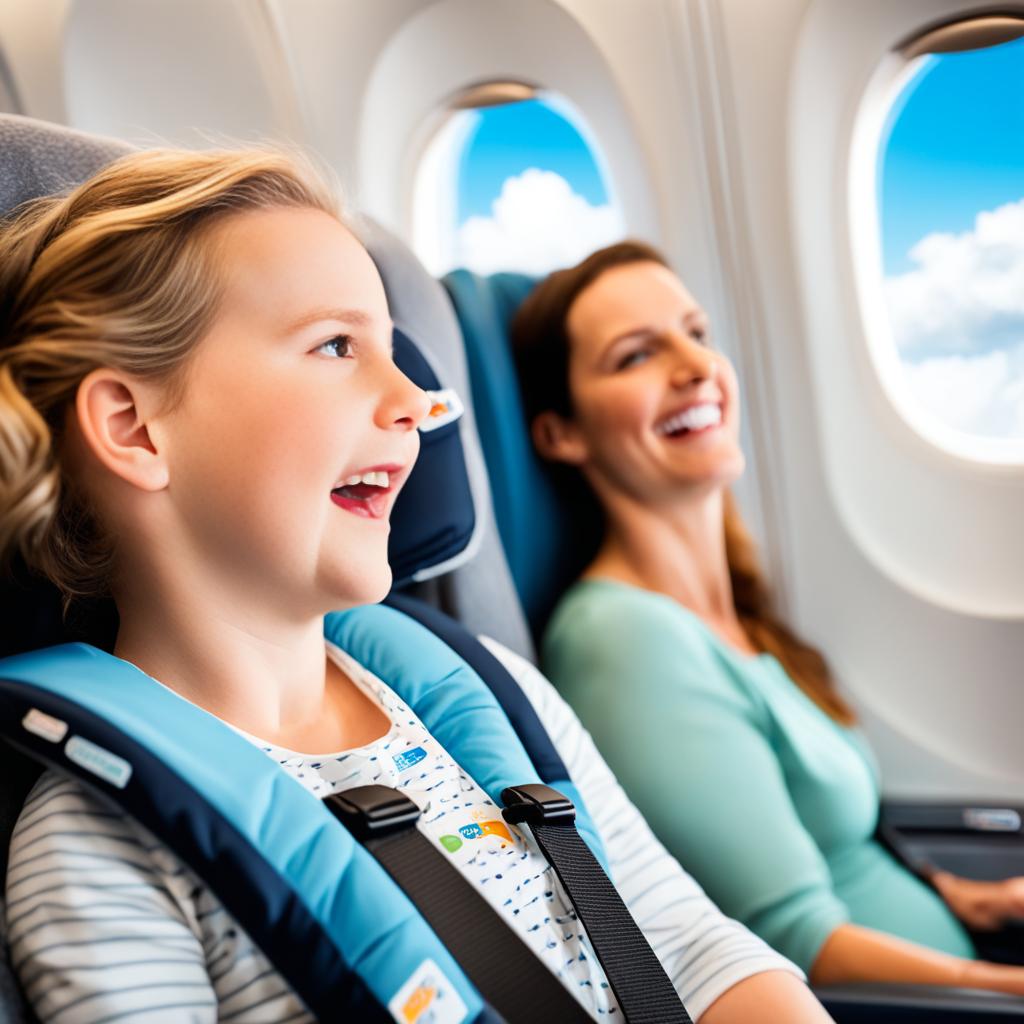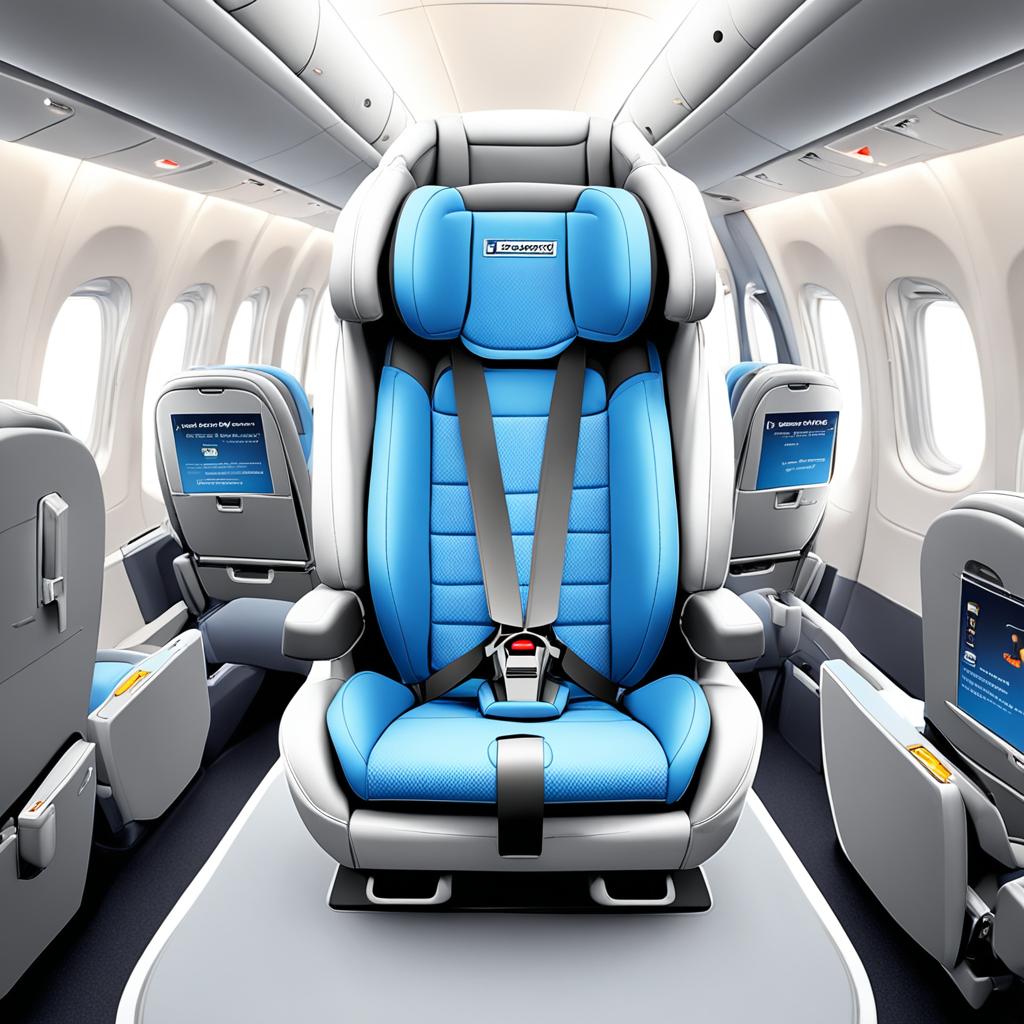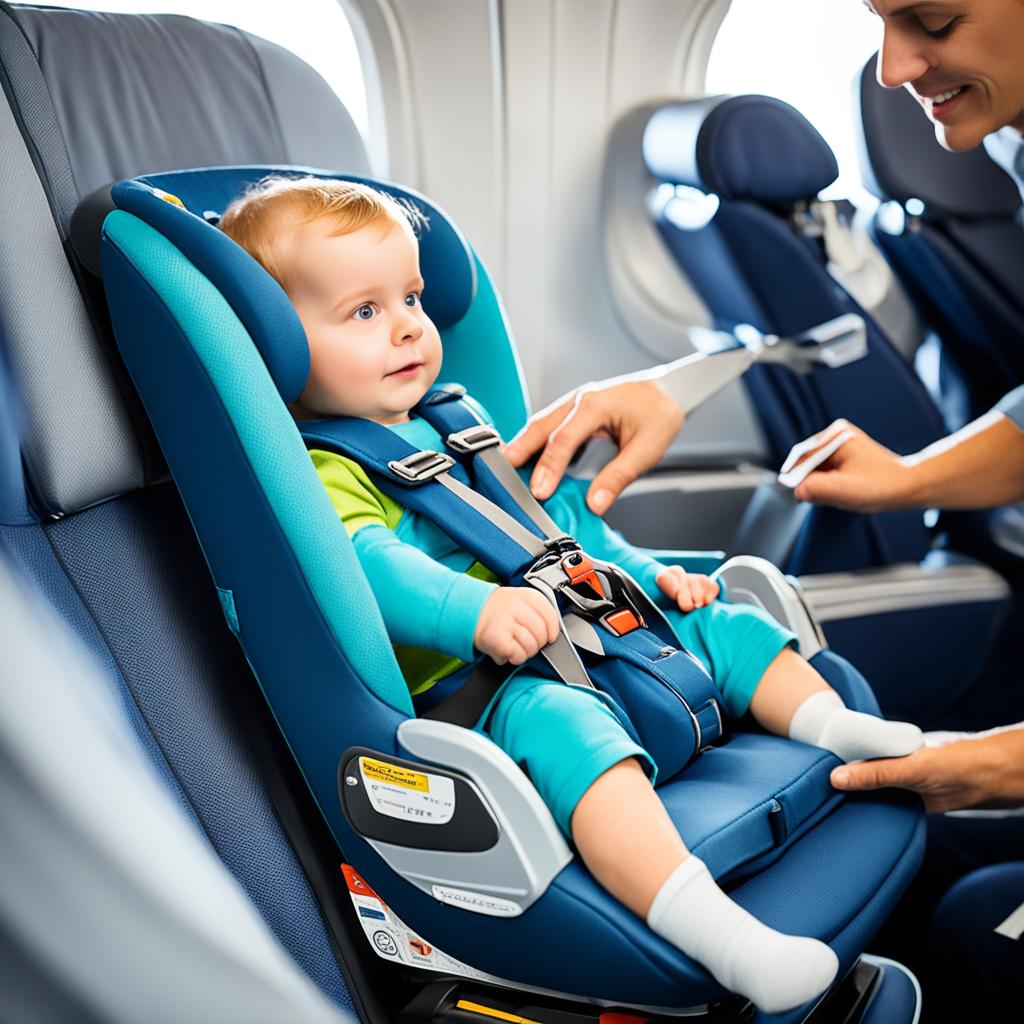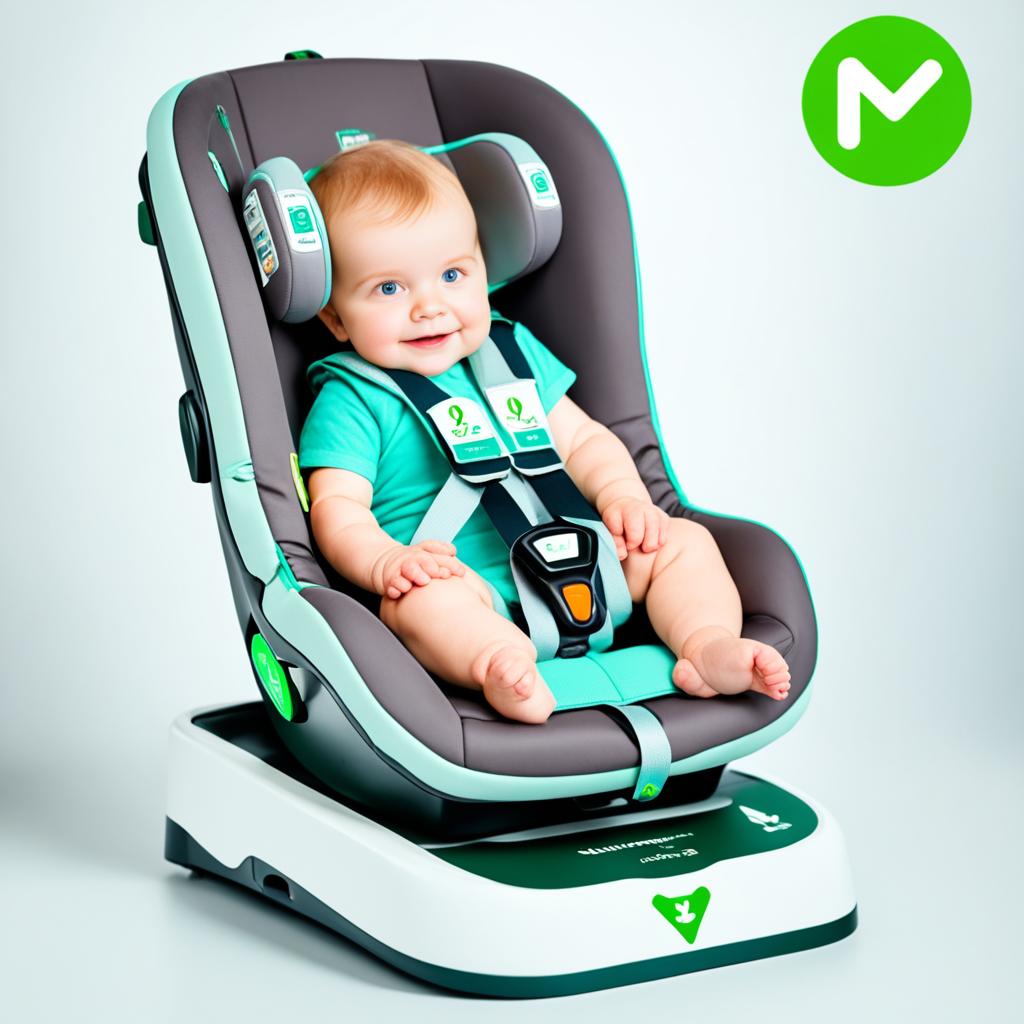When it comes to traveling with a car seat, ensuring its safety and compliance with airline regulations is of utmost importance. But how can you determine if your car seat is airline approved? What guidelines and safety standards should you be aware of? And what labels should you look for? In this article, we will provide you with all the information you need to confidently check if your car seat meets the necessary requirements for air travel. So, let’s dive in and find out how to ensure the safety of your little one during your next flight!
Importance of Using an Approved Car Seat on an Airplane

The safety of children on airplanes is of utmost importance, and using an approved car seat is crucial for ensuring their protection. While it may be tempting to hold your child on your lap during the flight, especially for short distances, it is important to understand the potential risks involved.
During turbulence, which can occur unexpectedly, a child who is not properly restrained is at a higher risk of injury. Turbulence can range from minor bumps to severe shaking of the aircraft, and even a momentary lapse in holding onto your child can have serious consequences.
That’s why the Federal Aviation Administration (FAA) strongly advises against lap child travel and instead recommends securing your child in an approved child restraint system (CRS) for the duration of the flight. Buying a ticket for your child is the only way to guarantee the use of a CRS and ensure their safety.
Following FAA guidelines and installing the car seat according to the manufacturer’s instructions are essential to provide optimum safety for your child. It’s important to note that not all car seats are designed for use on airplanes. Look for the label or certification stating that the car seat is approved for use on aircraft.
Traveling with an approved car seat offers numerous benefits:
- Enhanced Safety: A child restraint system provides better security and protection during the flight, reducing the risk of injury in case of turbulence or an emergency landing.
- Proper Positioning: Using a car seat ensures that your child remains in the correct position throughout the flight, reducing the strain on their body and increasing their comfort.
- Consistency: Familiarity is important for young children, and using their own car seat provides a sense of familiarity, which can help them feel more secure and relaxed during the flight.
By using an approved car seat, you are prioritizing the safety and well-being of your child, ensuring a smoother and more secure travel experience.
How to Check if Your Car Seat is Approved for Air Travel

To ensure that your car seat is approved for air travel, it is important to look for the necessary certifications and labels. One of the key labels to check for is the certification stating that the car seat is approved for use in both motor vehicles and aircraft. This label confirms that the car seat meets the safety standards required for air travel. Additionally, make sure that the car seat complies with the regulations set by the Federal Aviation Administration (FAA) or the equivalent airline authorities. These regulations ensure that the car seat provides the necessary protection during air travel.
Another factor to consider is the fit of the car seat in an airplane seat. Airline seats are typically no wider than 16 inches, so it is important to measure the width of your car seat to ensure it will fit properly. Failure to consider the width may result in difficulty installing the car seat or encroaching on the space of neighboring passengers.
Furthermore, check for any weight and size restrictions imposed by the airline or aviation authority. Some airlines may have specific guidelines regarding the weight and size of car seats allowed on their flights. By adhering to these restrictions, you can ensure that your car seat is compliant with the airline’s policies and regulations.
Remember, proper certification, labeling, and considerations for seat fit, weight, and size restrictions are vital to ensuring that your car seat is approved for air travel, providing the utmost safety and security for your child.
Car Seat Approval Checklist
| Certification Label | Fits in Airplane Seat | Meets Weight Restrictions | Meets Size Restrictions |
|---|---|---|---|
| ✔️ Approved for use in motor vehicles and aircraft | ✔️ Width does not exceed 16 inches | ✔️ Within weight limits set by airline | ✔️ Within size limits set by airline |
Alternative Options for Air Travel with Children
Aside from using a car seat, there are alternative options available for air travel with children. These options provide varying degrees of safety and convenience, depending on the age and weight of your child.
1. CARES Device
The FAA-approved CARES device is a lightweight harness specifically designed for children who are at least one year old and weigh between 22 and 44 pounds. This harness provides a safe and secure alternative to using a traditional car seat. The CARES device can be easily attached to the airplane seatbelt, ensuring that your child is properly restrained during the flight.
2. Booster Seat
Some airlines allow the use of booster seats during certain phases of the flight. A booster seat provides added height and support for older children, allowing them to comfortably use the regular seatbelt. When considering the use of a booster seat, it is important to check with the airline beforehand to ensure they permit this option.
3. Lap Child Extension Belt
For lap children, airlines may provide extension belts or lap belts to secure them to the parent’s seatbelt. This option offers a measure of additional security for young children who are sitting on a parent’s lap during the flight.
It is important to note that each airline may have its own specific policies and guidelines regarding alternative options for air travel with children. Contact the airline directly to determine which options are allowed and to ensure compliance with their regulations.
| Option | Age Range | Weight Range | Pros |
|---|---|---|---|
| CARES Device | At least 1 year old | 22 to 44 pounds | – Lightweight and portable – Provides an alternative to bulky car seats |
| Booster Seat | Varies by airline | Varies by airline | – Offers added height and support for older children – Allows them to use the regular seatbelt |
| Lap Child Extension Belt | Up to 2 years old (may vary by airline) | N/A | – Provides additional security for young children sitting on a parent’s lap |
Tips for Traveling with a Car Seat on an Airplane

When traveling with a car seat on an airplane, there are several tips to keep in mind. Ensuring the safety and comfort of your child is paramount, so here are some guidelines to follow:
- Use an approved car seat: Before your trip, make sure your car seat is approved for use on airplanes. Look for the label that certifies it for use in both motor vehicles and aircraft.
- Select the right seats: When choosing seats for your flight, consider reserving adjoining seats. This will allow you to install the car seat properly and ensure that it does not block the escape path. Having adjacent seats also provides more space for you and your child.
- Measure seat width: Check the width of your car seat to ensure it will fit in most airline seats. Most airline seats have a width of around 16 inches, so keep this in mind when selecting a car seat that meets the size requirements.
- Pack toys and snacks: To keep your child entertained during the flight, pack a bag of their favorite toys and snacks. This not only provides entertainment but can also help distract them from any discomfort during takeoff, landing, or turbulence.
- Follow installation instructions: It is crucial to follow the manufacturer’s instructions when installing the car seat in the airplane seat. Proper installation ensures that the car seat is secure and provides adequate protection for your child throughout the flight.
Remember, traveling with a car seat on an airplane requires careful planning and attention to detail. By following these tips, you can ensure a safer and more comfortable journey for your child.
Additional Considerations for Air Travel with Special Needs
Air travel with individuals who have special needs requires careful planning to ensure their comfort and safety. This is especially true for children who may exceed the weight limits of typical car seats and adults with physical challenges. In such cases, there are specific regulations and exemptions that need to be followed.
For children with special needs who are larger than the weight limits of standard car seats, specially designed child restraint systems (CRSs) approved for larger children are available. Airlines are required to allow the use of approved CRSs for children under 18 who have special needs, ensuring their proper protection during air travel.
Adults with physical challenges can request exemptions from the Federal Aviation Administration’s (FAA) safety belt regulations. They may use a CRS or device for added support and security during their flight. Exemptions can be obtained by submitting a petition through the FAA’s website.
When traveling with individuals with special needs, it is crucial to consult the specific regulations and guidelines provided by the FAA and the respective airlines. These resources will provide the necessary information to ensure a smooth and safe journey for everyone involved.
FAQ
Q: How do I know if my car seat is airline approved?
A: To determine if your car seat is approved for use on airplanes, look for labels and certifications indicating compliance with FAA regulations. Check for a label that states “This restraint is certified for use in motor vehicles and aircraft.” It is also important to read the user’s manual to confirm that the car seat can be properly installed in an airplane seat. Different airlines may have their own specific guidelines, so it is advisable to check with the airline directly to ensure compliance with their policies.
Q: What is the importance of using an approved car seat on an airplane?
A: The safety of children on airplanes is a top priority, and using an approved car seat is crucial in ensuring their protection. A child restraint system provides better security than holding a child on your lap, especially during unexpected turbulence, which can cause injuries. The FAA strongly advises against lap child travel and encourages parents to secure their child in an approved CRS for the entirety of the flight. Buying a ticket for your child is the only way to guarantee the use of a CRS. It is important to follow FAA guidelines and install the car seat according to the manufacturer’s instructions.
Q: How can I check if my car seat is approved for air travel?
A: To determine if your car seat is approved for air travel, look for the necessary certifications and labels. The car seat should have a label that states it is certified for use in motor vehicles and aircraft. Additionally, it should meet the safety standards set by the FAA or equivalent airline authorities. It is also important to consider the fit of the car seat in an airplane seat. Measure the width of the car seat to ensure it will fit in most airline seats, which are typically no wider than 16 inches. Take note of any weight and size restrictions imposed by the airline or aviation authority.
Q: Are there alternative options for air travel with children?
A: Yes, there are alternative options for air travel with children. The FAA-approved CARES device is a lightweight harness that can be used for children who are at least one year old and weigh between 22 and 44 pounds. It provides an alternative to using a traditional car seat. However, it is important to check with the airline to ensure their acceptance of the CARES device. Some airlines also allow the use of booster seats or backless child restraint systems during certain phases of the flight. For lap children, airlines may provide extension belts or lap belts to secure them to the parent’s seat belt.
Q: What are some tips for traveling with a car seat on an airplane?
A: When traveling with a car seat on an airplane, here are some tips to keep in mind:
– Make sure your car seat is approved for use on airplanes.
– Measure the width of your car seat to ensure it will fit in most airline seats.
– When selecting seats, consider reserving adjoining seats to accommodate the car seat and ensure it does not block the escape path.
– Pack a bag of toys and snacks to keep your child occupied during the flight.
– Follow the manufacturer’s instructions for proper installation of the car seat in the airplane seat.
Q: Are there additional considerations for air travel with special needs?
A: Yes, air travel with special needs individuals requires additional considerations. Children with special needs who exceed the weight limits of typical car seats may require specially designed CRSs approved for larger children. Airlines are required to allow the use of approved CRSs for children under 18 who have special needs. Adults with physical challenges can request exemptions from the FAA’s safety belt regulations and may use a CRS or device for added support during air travel. Petitions for exemptions can be submitted through the FAA’s website. It is important to refer to specific regulations and guidelines for air travel with special needs individuals.
